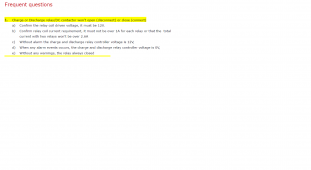Bob B
Emperor Of Solar
- Joined
- Sep 21, 2019
- Messages
- 8,722
That's the other thing I forgot to mention .... I didn't want to remove battery power from the SCC either. So .... I need one that can be remote turned on and off.Yes, wish I would have thought of that. My inverters do not have an on/off switch to turn off with a small relay. They don’t have anyway to communicate with the bms.
As for my charger I wanted to make sure I was cutting off the power the PV panels were providing rather than cutting off the dc from the battery to the charge controller. And also rather than cutting off the charge controller directly while it was charging. I know some charge controllers are fine being cutoff while pv power is going through them but it didn’t seem right to me. Only way to do that is with a relay that can handle the high amperage of my array.
For some people it is contrary thinking .... but it works for me. I think it works for me because I hadn't read very much about it before I started thinking about how to do it. I often don't line up with the status quo.



